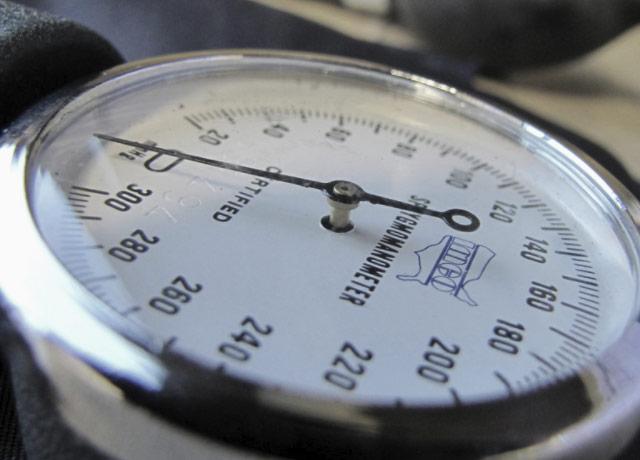
Treating hypertension: When experts' guidance differs
What happens when groups that publish official medical guidelines disagree on a basic premise?
A commentary published March 15 in JAMA explains how and why the American Diabetes Association's (ADA) guidelines on treating hypertension differ from those issued jointly by the American College of Cardiology and American Heart Association (ACC/AHA).
Dr. Ian de Boer, a professor of medicine/nephrology at the University of Washington School of Medicine, is one of the commentary's three co-authors. He discussed the issue with UW Medicine editor Brian Donohue. This Q&A has been edited for length and clarity.
Q: What’s the key blood-pressure recommendation of the ADA?
To treat high blood pressure, the ADA guidelines suggest that, in general, blood pressure less than 140/90 mmHg be targeted. But the guidelines emphasize individualization: Each patient and their provider should choose a blood-pressure target that’s appropriate for their health. For many people that would be less than 140/90 mmHg; for some people the target might be higher and for others it could be more aggressive, such as less than 130/80 mmHg.
The AHA/ACC recommendations encourage all patients to achieve blood pressures lower than 130/80 mmHg, which is more aggressive than any prior guidelines and more aggressive than our guidelines.

Q: How does a target guideline influence a physician’s care of a patient?
Hypertension is one of the most common health conditions in the world. When we evaluate a patient’s treatment, we’re constantly looking at what’s their achieved blood pressure, what medicine are they taking, what are the adverse effects from medications. Then we make recommendations about whether patients should continue that regimen, change medications, intensify therapy or relax it. To make these decisions, we’re using a target blood pressure to help determine the best next step of treatment.
Q: Isn’t that the individualization that your paper is advocating?
Applying guidelines to patients always requires individualization, that’s true. What we’re saying in this paper is that your target blood pressure should also be individualized. We think the AHA/ACC guidelines are too rigid in that way. If you’re individualizing care, why would 130/80 mmHg be your target for every patient? We’re saying physicians should apply the individualization process not just to the means of reaching a target BP but to identifying the target in the first place.
We do identify rationale in general terms. For instance, a target lower than 140/90 mmHg should only be selected if it benefits an individual patient more than it endangers them. More intensive BP therapy may be appropriate for patients at higher risk of cardiovascular events and/or progressive kidney disease – because they are most likely to benefit.
But that’s only half the equation; you also have to consider harms. Who is at higher risk for harms from more intensive blood-pressure control? It makes sense that patients who have more medical problems and are already treated with many blood pressure medications, or whose blood pressure is very difficult to control, will run into problems with more aggressive blood-pressure targets. This is something that we think the AHA/ACC guidelines do not address adequately. Commonly, in practice, we focus on benefits without considering harms, and that’s our concern here.
Q: What are some of the harms?
If blood pressure is treated to a level that is too low for an individual patient, that patient can get lightheaded and dizzy, have fainting, falls. They also can have short-term, abrupt declines in kidney function as well as abnormal levels of electrolytes like sodium and potassium. One of the points we make in our paper is that we need to be better at figuring out who is going to have those risks.
Q: How do physicians generally feel about updated guidelines? Is there fatigue at the thought of incorporating a new guideline into practice? And when guidelines disagree, like the ADA and the AHA/ACC, what’s a physician to do?
Physicians are frustrated when there’s a lack of consensus from experts. It can also lead to apathy about implementing guidelines. And then there’s another issue: These guidelines and targets are often translated to outcome metrics to which doctors are held. For example: What proportion of your patients has reached their targets?
Q: So more aggressive guideline makes it harder for doctors to earn a “success” label?
Yes, some physicians are now being graded on their patients’ success in attaining system-wide goals for blood pressure, hemoglobin A1c, and other numeric targets. In these situations, there's often little or no flexibility for patients who, for whatever reason, need a nonstandard treatment approach. So raising the bar of what constitutes success can push healthcare providers to pursue aggressive treatment indiscriminately.
Now, trying to make things easier for providers is not a motivation for any professional organization’s guidance. We’re all focused on optimizing patients' health. But strict, aggressive targets do put pressure on the healthcare providers, and while that might help attain appropriate targets for some patients, we’re concerned that it could harm others.
Q: Is there no impetus for your organizations to try to get together and hammer out consensus guidelines?
There should be, and I know that the ADA is open to that. We certainly recognize the value of consensus: It’s what providers need to more effectively implement what’s best for our patients.
For details about UW Medicine, please visit https://uwmedicine.org/about.